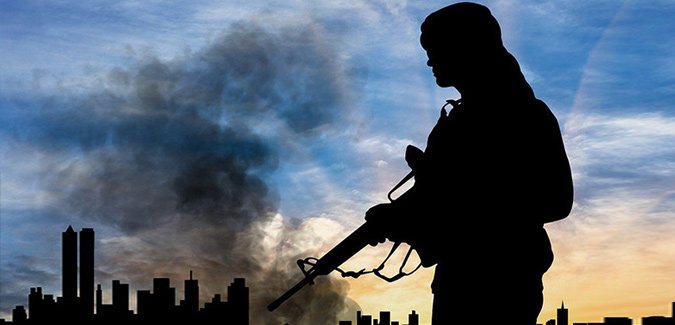By Shamim Ijaz
The arrival of the monsoon season should ideally bring a sense of joy and exhilaration, but alas, it has become synonymous with apprehension and widespread destruction. Last year’s calamitous floods serve as a poignant reminder of the perils that accompany this season. The floods wreaked havoc, affecting a staggering 33 million people and decimating 2.2 million homes. Shockingly, the affected districts in Sindh are still grappling with destitution, and a staggering 50,000 displaced individuals remain confined to makeshift camps. These distressing circumstances are stark indications of how a monumental tragedy failed to highlight the dire need for proactive measures and effective monsoon preparedness on the part of the authorities.
As if to reinforce the urgency, a recent rainstorm on Sunday unleashed its wrath upon Punjab and Balochistan, leaving a trail of destruction in its wake. Infrastructure was obliterated, and precious livestock perished, tragically claiming the lives of nearly 20 individuals. In response, the National Disaster Management Authority (NDMA) and the Ministry of Climate Change issued advisories urging caution in the face of pre-monsoon rains and thunderstorms. Yet, it comes as no surprise that these warnings have largely gone unheeded, except in Khyber Pakhtunkhwa (KP), where the Provincial Disaster Management Authority (PDMA) has meticulously crafted the Monsoon Contingency Plan 2023. This comprehensive strategy aims to mitigate the perils of rain-related disasters through proactive measures and a well-coordinated and swift response.
However, the question that arises is why such proactive planning and preparedness are not adopted nationwide. The contrast between KP’s commendable efforts and the lackluster response in other provinces is a testament to the need for a unified approach to tackle monsoon-related challenges. While KP has taken the lead in formulating a comprehensive plan, other regions seem content with complacency, oblivious to the potential devastation that lies in wait.
It is imperative that all provincial authorities, alongside the NDMA, work hand in hand to devise and implement effective monsoon preparedness strategies. This entails comprehensive risk assessment, early warning systems, infrastructure fortification, and most importantly, robust contingency plans that prioritize the safety and well-being of the populace. Merely issuing advisories and warnings is insufficient; concrete actions must be taken to ensure that the vulnerable communities are protected and equipped to withstand the onslaught of nature’s fury.
Furthermore, public awareness and engagement play a pivotal role in mitigating the impact of monsoon disasters. Effective communication campaigns should be launched to educate citizens about precautionary measures, evacuation protocols, and the importance of community resilience. It is only through collective efforts and a proactive approach that we can safeguard lives, minimize loss, and expedite recovery in the aftermath of monsoon-related disasters.
In light of the recurring devastation caused by the monsoon season, it is disheartening to witness the lack of urgency and preparedness on the part of the authorities. The time for complacency has long passed; it is high time for a paradigm shift towards a more proactive, coordinated, and comprehensive approach to tackle the challenges posed by the monsoon. We owe it to our fellow citizens to ensure their safety, security, and well-being in the face of nature’s unforgiving wrath.
Don’t forget to Subscribe our channel & Press Bell Icon.
Ideally, the proactive initiative undertaken by KP serves as a potent catalyst, urging other provinces to step up their game before homes, lives, and livelihoods find themselves teetering on the precipice once more. In the realm of impending monsoon calamities, the National Disaster Management Authority (NDMA) emerges as the linchpin, embodying utmost importance. It is paramount that this vital entity be fortified with ample resources, funds, competent staff, and state-of-the-art equipment. Amidst the gloomy backdrop of an ever-evolving global climate, the stark reality is that natural disasters have become an indelible facet of our existence. Each passing year brings forth mounting evidence of their escalating impact. The NDMA must assert its unequivocal authority and demonstrate unwavering competence in swiftly implementing a comprehensive array of aid, rescue operations, responsive strategies, diligent repairs, and robust safety measures. While Pakistan’s track record in terms of vigilance may have been lackluster thus far, there lies an opportunity to rectify our approach to climatic disasters by drawing invaluable lessons from our neighbors. Bangladesh, India, and Sri Lanka have spearheaded far-reaching strategies to preempt and counter the adversities unleashed by the monsoon. Thus, it is incumbent upon the government to embrace the responsibility of pre-disaster preparation and control, in close collaboration with esteemed climate experts and institutions. Above all, the welfare and well-being of our people must never be an afterthought but instead take center stage in our collective consciousness.
In the realm of power dynamics, where decisions shape destinies, it becomes imperative to derive profound wisdom from the annals of the past. The agonizing memories of previous monsoon disasters should serve as a clarion call for immediate action, leaving no stone unturned in fortifying the NDMA’s capacity to mitigate the impending threats that accompany the monsoon season. In the face of our rapidly changing climate, the government must shed its inertia and adopt a proactive stance to confront the challenges that lie ahead. The era of reactionary measures must yield to a new paradigm, one that prioritizes foresight and proactive measures designed to protect lives, homes, and communities from the unforgiving forces of nature. Let us seize this opportune moment to learn, adapt, and implement effective measures that will safeguard our nation and its people.
Undeniably, the monsoon season graces us with its arrival year after year, bringing forth torrents and tempests. Consequently, it becomes the solemn duty of our government to discard its laissez-faire attitude and embrace a proactive approach to disaster preparedness and control. Collaboration with eminent climate experts and institutions is not only desirable but imperative in formulating robust and well-informed strategies that can withstand the relentless onslaught of nature’s fury. We must draw inspiration from the triumphs of our neighboring countries and mirror their unwavering resolve in countering the challenges posed by the monsoon. Above all, the welfare and safety of our people, who bear the brunt of these calamities, must remain our paramount concern, transcending all other considerations.
KP’s bold initiative stands as a shining example, a call to arms for other provinces to follow suit before we find ourselves treading on thin ice once again. The NDMA holds the key to our preparedness and resilience in the face of impending monsoon calamities. It is high time we bolstered this critical institution with the requisite resources, funds, skilled personnel, and cutting-edge equipment. As we navigate the treacherous waters of an ever-evolving global climate, the stark reality is that natural disasters have become an indelible part of our reality. The evidence is mounting with each passing year, leaving no room for doubt. The NDMA must assume its rightful place at the helm, armed with authority and empowered to deploy aid, conduct swift rescue operations, mount effective responses, carry out necessary repairs, and ensure the safety of our communities. Pakistan may have lagged in its vigilance and preparedness thus far, but there is a glimmer of hope. We can learn from the experiences of our neighboring countries – Bangladesh, India, and Sri Lanka – who have adopted far-reaching strategies to preclude and counter the adversities brought forth by the monsoon. It is incumbent upon our government to recognize the urgency and gravity of the situation, collaborating closely with esteemed climate experts and institutions to develop comprehensive pre-disaster preparedness and control measures. Let us cast aside any notion of the people being an afterthought and place their well-being and security at the forefront of our efforts. Together, we can chart a course towards a future where the monsoon season no longer engenders fear, but instead serves as a testament to our resilience and unwavering commitment to protect our nation and its people.
In conclusion, the monsoon season demands our unwavering attention and proactive approach. We cannot afford to be complacent or ignorant in the face of its potential devastation. By investing in resilient infrastructure, early warning systems, and community-driven initiatives, we can mitigate the impact of monsoon disasters and break free from the cycle of fear and uncertainty. The National Disaster Management Authority (NDMA) must be strengthened and empowered to take swift and decisive action. Other provinces should draw inspiration from KP’s initiative and prioritize their own preparedness. We must recognize the reality of an altered global climate and learn valuable lessons from neighboring countries. The government’s duty lies in pre-disaster preparation and collaboration with climate experts and institutions. The people should be at the forefront of our efforts, ensuring their well-being and security. Together, let us embrace the challenge and create a future where the monsoon season no longer instills fear, but instead showcases our resilience and commitment to protecting our nation and its people. The time to act is now.
Subscribe our website for latest updates:
https://republicpolicy.com/shop/
Read More















